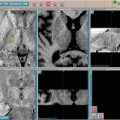© Springer Science+Business Media New York 2015
Lawrence S. Chin and William F. Regine (eds.)Principles and Practice of Stereotactic Radiosurgery10.1007/978-1-4614-8363-2_4242. Head and Neck Tumors: Viewpoint—Surgery
(1)
Division of Head and Neck Surgical Oncology and Skull Base Surgery, Department of Otolaryngology and Neurological Sciences, Boston Medical Center, Boston University School of Medicine, Boston, MA, USA
Introduction
Seventy-five thousand new cases of head and neck cancer are reported in the United States each year. Incidence is rising in thyroid (up 52 %), bone (43 %), soft tissues (20 %), salivary (20 %), tongue (16 %), tonsil (12 %), and nose (12 %). Incidence is falling in lip (down 58 %), hypopharynx (35 %), cervical esophagus (32 %), oropharyngeal mucosa (26 %), and larynx (26 %). There were 30,000 deaths from head and neck cancer in 2001 [1]. The most common risk factors are alcohol and tobacco, but more recently there is interest and detection of human papillomavirus (most commonly HPV 16) as an etiologic factor, particularly in the nonsmoker.
The National Comprehensive Cancer Network® (NCCN®), a not-for-profit alliance of 21 of the world’s leading cancer centers was formed and helps produce guidelines to treat cancers by different subsites. The treatment for head and neck cancer has been either surgery or radiation for early stage disease and a combined modality treatment (chemotherapy, radiation, and surgery) for advanced disease cancer.
Treatment Options
There has been an increase in the utilization of nonsurgical therapies for head and neck cancer since the publication of the Veterans Affairs Laryngeal Study Group results in 1991 [2–9]. This study showed that 66 % of patients could preserve their larynx without changing their survival if undergoing nonsurgical therapy versus total laryngectomy. The only other randomized trial in head and neck cancer treatment comparing surgery to nonsurgical treatment is by Lefebvre et al. [10]. In this article the authors randomized patients with T2–T4 piriform sinus cancer to either total laryngectomy with partial pharyngectomy and neck dissection or to three doses of induction chemotherapy, followed by concomitant chemoradiation in responders (nonresponders were placed in surgical arm). This study showed no difference in local, regional, and 5-year disease-free survival between the two groups. Unfortunately this study excluded any advanced case requiring plastic surgery repair and did not have any data on functionality of the larynx.
Since then multiple articles have been published comparing the efficacy of radiation with or without chemotherapy and have supplanted the induction chemotherapy paradigm set by the VA laryngeal study with concomitant chemoradiation therapy (CRT) protocols. The Radiation Therapy Oncology Group trial (RTOG) 9111 was instrumental in demonstrating improved survival with concurrent CRT [11]. The problem again has been that this randomized trial did not have a surgical arm. Similarly it seems that nonsurgical trials are being extrapolated onto treating head and neck cancers without adequate comparisons to the gold standard surgery. In the example of larynx cancer, the National Cancer Data Base (NCDB) demonstrates a decrease in survival in recent years that parallels the observed trend of increasing use of nonoperative treatment and is not due to an increased incidence of advanced-stage disease [4, 6].
Despite advances in surgery and CRT, local/regional recurrence rates were around 30 %, distant metastases developed in 25 %, and 5-year survival was around 40 %. Furthermore, in the presence of high-risk features such as extracapsular extension, positive surgical margins, and others, recurrence rates of up to 61 % had been observed, and 5-year survival dipped to around 30 % [11]. For this reason the RTOG 9501 [12] trial was designed to see the effect of adding cisplatin-based chemotherapy to postoperative radiation therapy. Two hundred and thirty-one patients were randomly assigned to receive radiotherapy alone (60–66 Gy in 30–33 fractions over a period of 6–6.6 weeks) and 228 patients to receive the identical treatment plus concurrent cisplatin (100 mg per square meter of body surface area intravenously on days 1, 22, and 43). The rate of local and regional control was significantly higher in the combined-therapy group than in the group given radiotherapy alone (hazard ratio for local or regional recurrence, 0.61; 95 % confidence interval, 0.41–0.91; P = 0.01). The estimated 2-year rate of local and regional control was 82 % in the combined-therapy group, as compared with 72 % in the radiotherapy group. Disease-free survival was significantly longer in the combined-therapy group than in the radiotherapy group (hazard ratio for disease or death, 0.78; 95 % confidence interval, 0.61–0.99; P = 0.04), but overall survival was not [13]. At the same time another study from the European Organization for Research and Treatment of Cancer Trial 22931 was published. In this study after undergoing surgery with curative intent, 167 patients were randomly assigned to receive radiotherapy alone (66 Gy over a period of 6 1/2 weeks) and 167 to receive the same radiotherapy regimen combined with 100 mg of cisplatin per square meter of body surface area on days 1, 22, and 43 of the radiotherapy regimen. The rate of progression-free survival was significantly higher in the combined-therapy group than in the group (47 % versus 36 %) given radiotherapy alone (P = 0.04). The overall survival was also higher in combined modality group (53 % versus 40 %) (P = 0.02). The locoregional relapse rate was lower in combined group as well (18 % versus 31 %) (P = 0.007) [14]. In both studies the complication rates and toxicity rates were higher in the combined modality group. The high-risk patients were considered as those with positive margins and extracapsular spread on lymph nodes only.
The toxicities in both the abovementioned trials ranged from mucositis, dysphagia, and ultimately gastrostomy tube dependence [15]. In addition we see the rendering of the larynx to be nonfunctional with the patient suffering from aspiration, voice changes, and ultimately requiring additional surgery. Data suggests that complications from salvage laryngeal surgery after CRT have complication rate as high as 59 % with the most common complication being pharyngocutaneous fistula [13]. This morbidity may require additional surgery including free tissue transplant reconstruction.
Over the years many cancers were automatically referred for CRT treatment, but better surgical extirpative and reconstructive techniques are making many unresectable tumors resectable with good quality of life and oncological control.
Evolution of Surgery
Over the years many subsites in the head and neck can be safely operated on with minimally invasive techniques. The last decade has seen the expansion of endoscopic skull base resection techniques, transoral robotic surgery for oropharyngeal cancers, and endoscopic and robotic techniques for partial laryngectomies. The goal has been to eliminate the cancer via targeted surgical technique and apply CRT for the high-risk patients.
The advantage of primary surgery has been the addition of pathological data that can help guide adjuvant therapy. For example, if an oral cancer is removed and the neck dissected out, we can get valuable data about perineural and lymphatic invasion of the primary tumor, extracapsular spread of the lymph nodes, and the number of lymph nodes. This data can then help formulate the need or not of adjuvant radiation therapy with or without chemotherapy. Moreover, per the NCCN guidelines [16], radiation dose can be deintensified in the postoperative period. For oropharyngeal cancers the recommended definitive primary radiation dose is 66–74 Gy to the primary site and involved neck nodal stations. Uninvolved nodal stations can receive 44–64 Gy. On the other hand once the cancer has been primarily extirpated with neck node dissection, the radiation dose to the primary and involved nodes can be reduced to 60–66 Gy. Interest in deintensification of radiotherapy is gaining momentum due to the detrimental impact on swallowing and hence quality of life with increasing radiation dose. A recent article [17] noted that a dose of >50 Gy to the base of the tongue and a mean dose of >51 Gy to the superior pharyngeal constrictor, middle pharyngeal constrictor, and inferior pharyngeal constrictor all correctly identified penetration and aspiration of fluids at 6 months post treatment. Mean dose to the glottic/supraglottic larynx of >48 Gy, maximum dose to the upper esophageal sphincter of >60 Gy, and mean dose to the esophagus of >17 Gy also correctly identified penetration and aspiration of fluids at 6 months. Higher doses of radiation resulted in higher dysfunction.
Human papillomavirus (HPV) type 16 has been demonstrated as a cause of oropharyngeal cancer that confers a good prognosis on the patient. In a study comparing accelerated fraction versus standard fraction radiation therapy for stage 3 and 4 oropharyngeal cancer (RTOG 0129), it was demonstrated that 3-year overall survival in HPV-positive patients was 82.4 % versus 57.1 % in HPV-negative patients [18]. This study has helped define HPV-positive cancers as a different entity. The new dilemma that head and neck oncologists now face is whether there can be deintensification of treatment for these favorable cancers.
Transoral robotic surgery (TORS), transoral laser surgery, and endoscopic laser surgery have enabled the management of oral cavity, oropharynx, and larynx surgery via minimally invasive techniques that allow for faster return to swallowing without traditional neck incisions. Currently there are studies under way to consider the impact of TORS on HPV-positive cancers. TORS is considered as a treatment deintensification modality for oropharyngeal cancers that allows for targeted therapy of cancer and along with convention neck nodal surgery may in the future obviate the need for adjuvant CRT in appropriately selected patients in the future.
Endoscopic skull base techniques have similarly enabled us to remove skull base tumors without the need for craniotomies. Local vascularized reconstruction techniques that can be accomplished endoscopically have allowed for excellent watertight closure of the skull base [19].
Furthermore, there has been development of accountable care organizations (ACO) to link provider reimbursements to quality metrics and reduce overall total cost of care. ACOs aim to place a higher degree of financial responsibility on the providers, with hopes of improving care management and limiting unnecessary expenditures [20]. There is also a trend towards discussion of “regionalization” of cancer care that may result in better outcomes for patients treated in high volume hospitals [21–23].
Stereotactic Radiosurgery
Stereotactic radiosurgery (SRS) has not been shown to be of benefit as a primary treatment modality for any head and neck cancer. Additionally therapy options for locoregional recurrences in previously irradiated head and neck patients are limited. Salvage surgery if clinically feasible is the standard treatment for recurrences [24, 25], but with extensive locoregional spread, surgery alone is not sufficient. Those patients who are considered inoperable often receive palliative chemotherapy with low response rates ranging from 10 to 40 % [26, 27]. Salama et al. [28] reported the long-term outcome of concurrent treatment with chemotherapy and re-irradiation of patients suffering from recurrent or second primary squamous cell carcinoma of the head and neck (SCCHN). One hundred and fifteen patients were treated with locoregional control, and free of distant metastasis rate at 3 years was 51 % and 61 %, respectively. Re-treatment was highly toxic with 19 toxic events, five of them due to carotid hemorrhages. The authors came to the conclusion that re-irradiation of recurrent head and neck cancer should be limited to clinical trials.
As conventional reradiation therapy has high toxicity, SRS in the re-irradiation of head and neck cancer patients has been pursued in the last few years [29].
Voynov et al. reviewed 22 patients re-treated with SRS in recurrent previously irradiated SCCHN [30]. Using the CyberKnife, patients were irradiated with a median single fraction dose of 5 Gy for a median of five fractions. Re-treatment with SRS was considered to be safe as no grade 4 or 5 toxicities or late toxicities occurred. Local control rate was 26 % at 2 years, with a 22 % 2-year survival. In 2009 an analysis was published by Roh et al. of 36 patients with recurrent head and neck cancer who had received a full-dose radiation of 66–70.2 Gy in the first radiation therapy (RT) course. They were then re-irradiated with CyberKnife radiosurgery (SRS) with three fractions of 10 or 13 Gy. The authors changed to a fractionation schedule of five fractions of 5 or 8 Gy [31]. Fifteen patients (42.9 %) showed complete tumor regression and 13 (37.1 %) partial regression with median local control rates and overall survival rates after 1 year of 61 % and 52.1 %, respectively. Late adverse events were observed in three patients: two grade 4 and one grade 5 toxicity.
Stay updated, free articles. Join our Telegram channel

Full access? Get Clinical Tree








